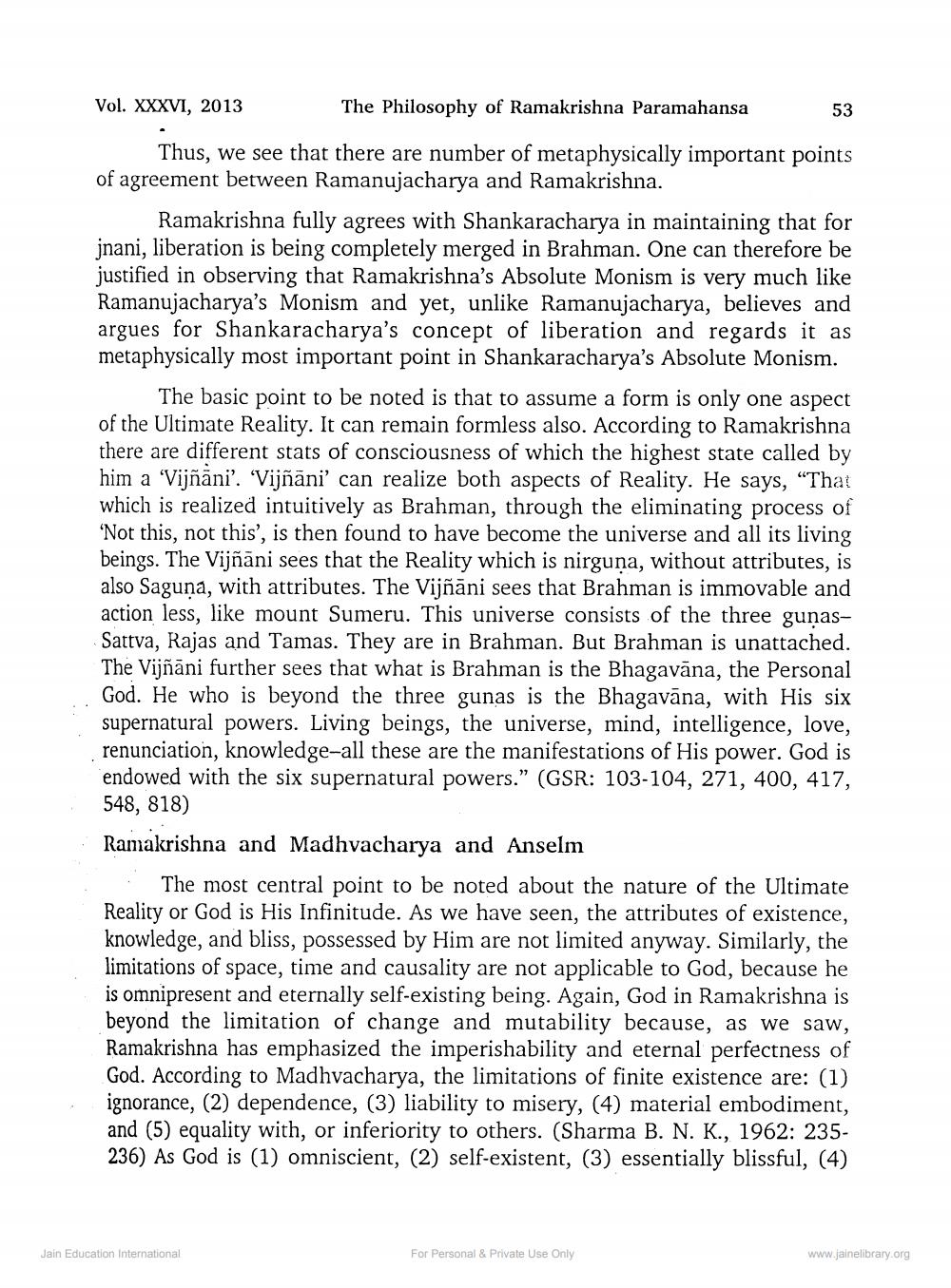________________
Vol. XXXVI, 2013
The Philosophy of Ramakrishna Paramahansa
53
Thus, we see that there are number of metaphysically important points of agreement between Ramanujacharya and Ramakrishna.
Ramakrishna fully agrees with Shankaracharya in maintaining that for jnani, liberation is being completely merged in Brahman. One can therefore be justified in observing that Ramakrishna's Absolute Monism is very much like Ramanujacharya's Monism and yet, unlike Ramanujacharya, believes and argues for Shankaracharya's concept of liberation and regards it as metaphysically most important point in Shankaracharya's Absolute Monism.
The basic point to be noted is that to assume a form is only one aspect of the Ultimate Reality. It can remain formless also. According to Ramakrishna there are different stats of consciousness of which the highest state called by him a 'Vijñāni”. “Vijñāni' can realize both aspects of Reality. He says, “That which is realized intuitively as Brahman, through the eliminating process of ‘Not this, not this', is then found to have become the universe and all its living beings. The Vijñāni sees that the Reality which is nirguna, without attributes, is also Saguna, with attributes. The Vijñāni sees that Brahman is immovable and action less, like mount Sumeru. This universe consists of the three gunasSattva, Rajas and Tamas. They are in Brahman. But Brahman is unattached. The Vijñāni further sees that what is Brahman is the Bhagavāna, the Personal God. He who is beyond the three gunas is the Bhagavāna, with His six supernatural powers. Living beings, the universe, mind, intelligence, love, renunciation, knowledge-all these are the manifestations of His power. God is endowed with the six supernatural powers.” (GSR: 103-104, 271, 400, 417, 548, 818) Ramakrishna and Madhvacharya and Anselm
The most central point to be noted about the nature of the Ultimate Reality or God is His Infinitude. As we have seen, the attributes of existence, knowledge, and bliss, possessed by Him are not limited anyway. Similarly, the limitations of space, time and causality are not applicable to God, because he is omnipresent and eternally self-existing being. Again, God in Ramakrishna is beyond the limitation of change and mutability because, as we saw, Ramakrishna has emphasized the imperishability and eternal perfectness of God. According to Madhvacharya, the limitations of finite existence are: (1) ignorance, (2) dependence, (3) liability to misery, (4) material embodiment, and (5) equality with, or inferiority to others. (Sharma B. N. K., 1962: 235236) As God is (1) omniscient, (2) self-existent, (3) essentially blissful, (4)
Jain Education International
For Personal & Private Use Only
www.jainelibrary.org




